Homemade Clay Toothpaste
Cleaning your teeth with dirt sounds pretty oxymoronic, right?
You might be surprised to know that clay toothpaste actually leaves your teeth feeling very clean.
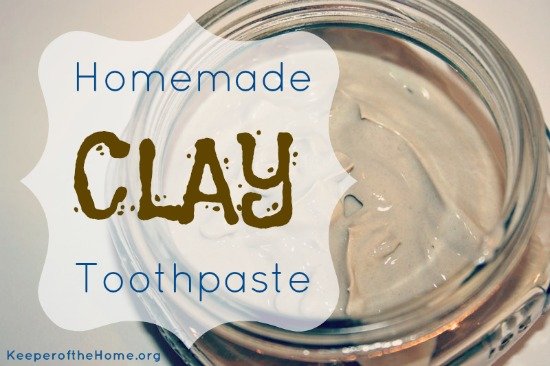
One of the things I like best about it is that it doesn’t contain glycerin, which doesn’t clean but actually coats your teeth. This coating, while it may sound like a good thing, prevents teeth from being able to remineralize and can actually weaken teeth over time.
Many of us have gotten off of conventional brands of toothpaste and switched over to something more natural. However, most “natural” toothpastes on the market still contain glycerin (but not all– some products such as this one don’t).
I wrote a while back that for the purpose of avoiding glycerin, as well as fluoride, preservatives, sodium lauryl sulfate, among other things, our family was looking for something different. We had tried homemade baking-soda based toothpaste recipes and they just didn’t do it for us at all. Instead, we found Earthpaste!
Now, I still love Earthpaste and there are a couple tubes of it in our bathroom upstairs as I write this. I highly, highly recommend it to anyone looking for a 100% all-natural toothpaste option and you can read more of my glowing praise in this post.
Much as I love it (and many of you have tried it and told me you love it too), not all of my readers can afford it (or any other health food store toothpaste, for that matter). I understand. There have been many seasons in our lives when we simply couldn’t justify purchasing a pricey toothpaste when there were so many other bills to pay and just not enough money to go around.
Seeing that it’s Make It Yourself month, it seemed like the perfect time to figure out how to to it myself!
And besides… am I the only one who gets this strange kick of out seeing how many of the things we use that I can make myself? Call me a nut, but I do this sort of thing for fun.
The other night, for example, I had a Friday night to myself after the kids were in bed. And what did I do with this jewel of an opportunity? Read? Take a bath? Go to bed early?
Oh no. I mucked up my kitchen making vapor rub, facial lotion (or trying anyways), more deodorant, and perfecting my clay toothpaste recipe. Just call me a party animal.
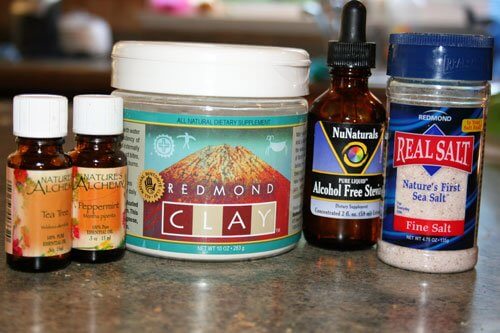
How to make clay toothpaste
Five simple ingredients. Well, six, if you count water.
- 1/4 cup Redmond Clay (this is a bentonite clay, in its dry powder form – you can buy it here)
- 3/8 cup boiling water (purified is always best)
- 1/4 tsp. Real Salt (or any unrefined sea salt that you enjoy)
- 15-25 drops Stevia (I personally prefer liquid, but powder is fine)
- 10-12 drops Peppermint essential oil (Spearmint would be good, too)
- 4-6 drops Tea Tree essential oil
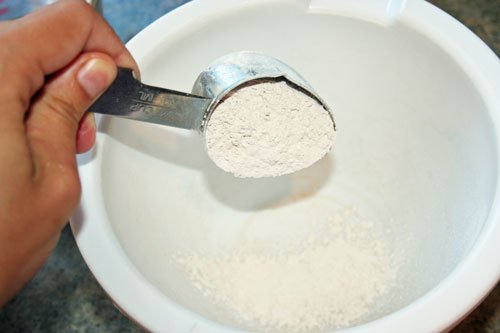
1. Dump the powdered clay in a bowl, then add sea salt.
2. Pour in the boiling water.
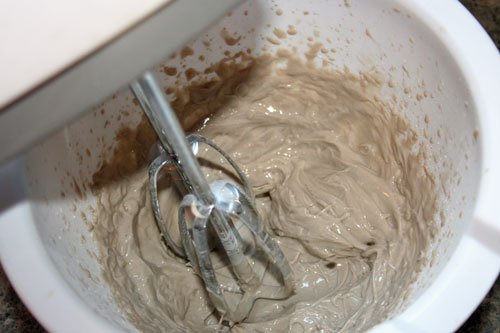
3. Using a hand mixer (or a sticker blender would also work), start mixing the clay until it is well blended with the water.
The consistency that you’re going for is just thick enough to stay on a toothbrush, but still thin enough that you will be able to dip a toothbrush in and easily scoop some up. If it’s too thick, this gets harder to accomplish.
In my original recipe, I used an extra 1 tsp. of clay as well as a slightly heaping 1/4 cup of it. This gave me a nice, thick texture that was still easy to use. The only problem was that over time, taking off the lid of the jar to use it started to dry it out a little bit.
(It didn’t help that my 3-year-old started helping herself to it because she liked the flavor, and guess who never remembered to put the cap back on? Hey, at least this toothpaste is completely edible and non-toxic!)
In this second batch, I decided to make it less thick up front, to account for that slow amount of drying out that will happen over time. Either way, it will still work fine, so I’ll leave the exact texture and thickness up to you!
4. Start adding stevia, and both the peppermint and tea tree essential oils. But don’t put the full amounts in yet. Start with half of the drops first. This gives you the ability to taste it as you go and not end up with something sweeter/stronger than you will enjoy using.
Mix it well after you add the first of the drops. Then taste a bit on the tip of your finger. Go ahead and add more stevia and/or essential oils until it tastes how you want it. For me, about 20 drops of stevia, 13-14 peppermint, and 4 tea tree was perfect.
In my first batch I used about 15 drops of stevia, 12 peppermint and 8 tea tree. It was fine, but the tea tree came through too strong for my liking and I wished it was slightly sweeter, hence the recipe adjustment the second time around.
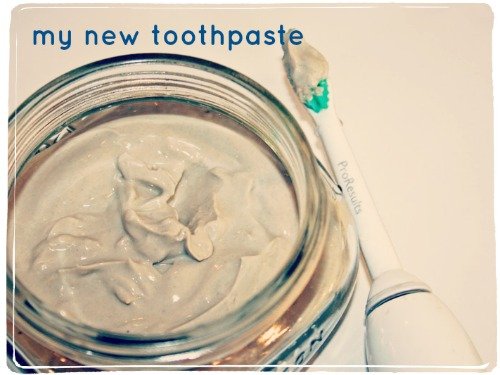
That’s it!
Scoop it up into a jar. I chose this wide mouth, shallow glass mason jar, because I thought it would make it easy to dip my brush in, and it does.
Make sure you put an airtight lid on top, and keep it screwed on whenever you aren’t using it (i.e., keep it out the toddler’s reach, in my case). I used a plastic screw-on mason jar lid, which was ideal.
Another idea that I had but haven’t been able to try yet is putting it into those refillable, squeezable shampoo/conditioner bottles with the flip cap that you buy at the dollar store. Do you know what I mean? If anyone tries using one of those, please let me know how it works! That’s how I plan to try it next.
What about using xylitol?
Those who are familiar with the ingredients in Earthpaste or who have just looked around the site may be wondering why I used stevia instead of xylitol.
The answer isn’t as fancy as you may hope. Honestly, it’s because that’s what I had on hand.
I know that there are controversies over whether ingesting xylitol is good or bad for you. Obviously, I haven’t made a decision that it’s bad because we buy Earthpaste and use it regularly. I have read several articles from naturally minded, holistic dentists who believe that it is not only non-toxic, but also very helpful for preventing cavities. I’ve also read a few things suggesting it might not be 100% safe. I haven’t made up my mind yet.
If you want to use xylitol in this recipe, go ahead! A friend of mine has tried this with great results. Substitute it for the stevia, just start with a little pinch and add more slowly until you achieve the taste and sweetness you desire.
If you want to use stevia, but not the liquid, that’s fine, too. You can use either the white powdered, or the green unrefined powder, in exactly the same method. Add it slowly, to taste. That’s it.
Have you tried clay toothpaste? What do you currently use for your family’s toothpaste?
This isn’t a sponsored post in any way. I’m using Redmond products because I think they’re great, and it was their Earthpaste product that got me inspired to try this in the first place. 🙂 Also, this post includes affiliate links. You aren’t obligated to use these links, but when you do we earn a small commission which helps to support this website, so thank you!

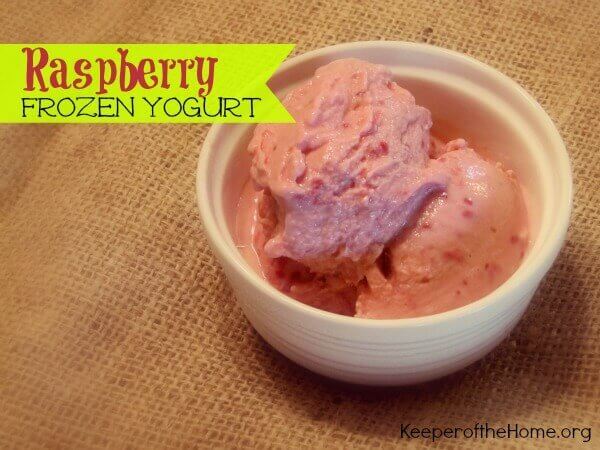


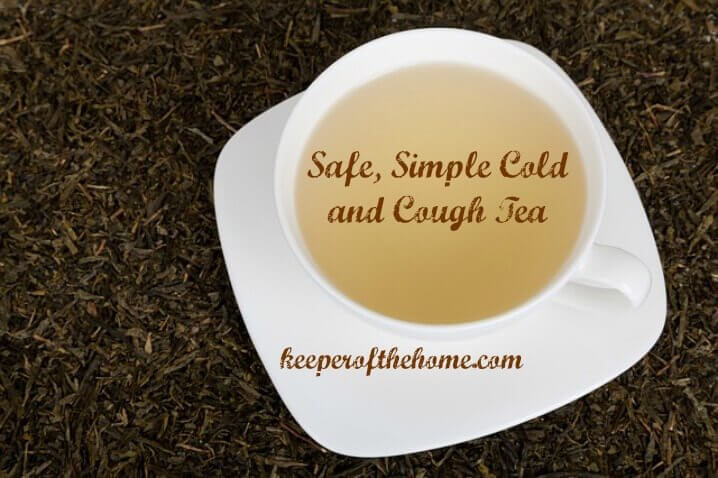
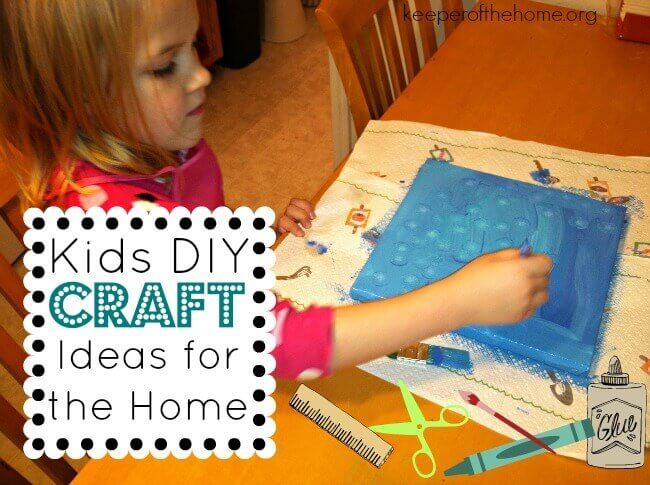
I am SO gonna try this! The first thing I thought of to put it in was a decorator frosting bottle that you can get at a craft store in the baking/cupcake/cake isle. That way you take the cap off, use, and put the cap on… less mess less waste.
I’m definitely going to try this! Does your whole family use the same jar? What do you think about the possibility of bacteria growth from dipping toothbrushes in this?
Is clay toothpaste safe while nursing? I purchased some Earthpaste while preg but was afraid to use it then. I would like to start but am still nervous, and unsure if its smart to try something new while nursing as well.
I am nursing my 11 month old and have been using it for the last 4 months. I am a very cautious nursing mother and looked into the safety of this product prior to using it. It is safe to swallow for little kids so it is also very safe for nursing moms. If you are worried about the essential oils you can always leave them out. I didn’t add any to my batch and it is just sweetened clay. The taste doesn’t bother me without mint.
My main concern would be ingesting it regularly as mint can decrease milk supply.
Right, so you’d want to spit and not swallow to avoid too much mint. But really, it would be such a small amount if you did that.
You could flavour it differently, if you were concerned about that. I’ve also seen cinnamon flavoured versions as well.
Yes, it’s fine. You’re using such a small amount of it and you are also spitting it out. Clay is only going to cause a major detoxification reaction if you are ingesting a lot of it (ie. spoonfuls) or bathing in large amounts of it.
I made some both in the gel form and powdered prior to your recipe. I am not positive which I like best yet. I will definitely be trying your recipe as well. I love Earthpaste but do find it a bit expensive. When I made my tooth paste I did use xylitol (the natural kind from birch trees, not the corn produced kind) . I have thought about using a plastic squeeze bottle since the main drawback of homemade tooth paste for me is the inconvenience and little bit of yuck factor with dipping my toothbrush in the jar and not having to have separate jars for each family member. I am mainly worried about chemicals from the plastic leeching into the toothpaste since the clay is so good at pulling toxins of of stuff and I know you need to be careful with that. The actual Earth paste comes in a plastic tube though so apparently it should be okay. Do you know what plastics would be safe to use?
Plastics with the #1 or #2 are pretty good, #4 and #5 are ok, and other numbers aren’t the best.
Have you figured what your savings is by making this yourself? Just curious.
I was able to find jars of Redmond clay on a vitamin website for about half of the price that is listed on the company site. So for the price of a little more than a tube of the Earth Paste I can make quite a few batches. I think it will depend on how cheap you can get the clay.
Could you share what site you found it on?
I bought it on vitacost (10 oz. for just under $7), here is the link. http://www.vitacost.com/redmond-realsalt-clay-10-oz
(If sharing the site is inappropriate, I apologize Stephanie. I know that some blogs do not want this type of thing posted).
That’s ok, I don’t mind you sharing where you found it. 🙂
Bentonite Clay at thebulkherbstore.com is $8/lb. If I’m wrong, someone correct me, but I’m pretty sure it’s the same exact thing as Redmond clay. Redmond is just a name brand.
I think I’ll try this recipe…I’ve tried a tooth powder recipe that uses the clay dry, but the powdered cinnamon and cloves in it gets stuck in my teeth! A smooth paste should work better!
Sorry, that website doesn’t have the word “the” in it.
You know, I haven’t, but I think it’s probably about $1 or less per batch, which lasts me almost a month.
We’ve been making our own clay toothpaste for a few months using a similar recipe. I couldn’t tell you just this moment if it has salt. I use powdered stevia. Also I pour all the ingredients into a squeeze bottle and then just shake to mix and it works great!
My friend makes some with baking soda, coconut oil and peppermint oil. I’ve been meaning to try it but now I need to decide clay vs. Baking soda. Hmmmmmmm!
I either use baking soda or tooth soap made by Rose of Sharon Acres(did not care for the chips but like the liquid). Is there any down sides to using baking soda that anyone has found.
My dental hygienist has told me that baking soda is too harsh for my teeth. I’m over 50 – if you’re a lot younger it may not be an issue.
I have all the ingredients for this clay paste! So excited to try this! Thank you!
I looked at the peppermint oil that you used and it says “not for internal use” . What kind of peppermint oil is safe to use internally? I wonder if it would be better to get a peppermint extract instead?
The Young living Oils are all edible and I sell them and use them all the time.
Very few essential oils are safe for ‘internal use’…….. ask any certified aromatherapist! Since you aren’t swallowing it, though – for this purpose peppermint oil is generally considered safe.
That’s my feeling on it. We’re not swallowing, only swishing it and then spitting it out.
You’re right, it does. However, I’m not swallowing but spitting it out. So technically it’s sort of internal, but not really being ingested. I’m personally ok with that, but if you aren’t, then you might want to flavour it differently. You could use extract, I haven’t tried that, though. You could also flavour it with something like cinnamon oil instead.
Excited to try this, I need to mix up a batch of toothpaste anyways. My only concern is dipping the toothbrushes into the mixture. Wouldn’t that cause bacteria to flourish?
Hi, I can’t wait to try your recipe. The only thing I would suggest is that you buy a small scoop or BPA free plastic spoons to apply the toothpaste to the toothbrush. Sticking your toothbrush into the jar can cause bacteria to be in the toothpaste and that can be transferred to all in the family. I learned a long time ago to never stick your fingers in a jar or put your toothbrush in a container even if you are the only one using it.
Well, this jar has been mostly just for me until my toddler discovered it recently. That’s why I need a squeeze option now! 🙂
This looks so nice! I love the thought of using clay, but I’ve always wondered about shelf life. I mean, it’s got water in it, which grows everything.
How long can it be scooped in with {cootie-filled} toothbrushes without getting germy? Or does the clay prevent the growth of bugs somehow?
Mine only lasted a few weeks and seemed just fine. And of course, I rinsed out my toothbrush well, and until just recently, I was the only one using that particular jar (until the 3 year old discovered that she really liked “mommy’s toothpaste” :). But, the oils and the salt and clay would probably all work together to help prevent growth. Still, I’m looking for a squeeze tube option next.
That’s what I was planning to do when I try this…use a plastic squeeze bottle from the cake decorating aisle in the craft store (they’re actually designed for using with Wilton’s Candy Melts), or using a picnic-style ketchup or mustard squeeze bottle. Thank you so much for this wonderful idea!
This sounds like it would be good but my first thought was that I did not think it sanitary at all to be dipping various family toothbrushes into a jar and sharing among yourselves all the mouth germs the family has,
You’re right, it wouldn’t be particularly. Right now, it’s really just me using it and my 3 year old discovered it and started using it, so now I need to find a squeeze tube solution. My family was still using the Earthpaste while I was experimenting for myself. 🙂
I’ve tried using straight baking soda, and love the clean feeling it gave my teeth. But, I have a crown and it started irritating that tooth pretty significantly. I intend to make this recipe in a very small batch, with baking soda replacing half the salt and see how that goes. Let me know if any of you try that too!
I have read so many toothpaste recipes with baking soda, but every time I talk to someone in the dental care profession, they say, no, no, no, don’t’ use baking soda on your teeth, because it’s too abrasive. I don’t know if that’s true about even using it in small amounts, but since I’ve never enjoyed homemade baking soda toothpaste, I just avoid using it at all for this purpose.
i have a bottle of liquified bentonite that my husband used for a detox back in the day. he didn’t like it (maybe because he’s already a ceramacist and eats the stuff all day in his studio). could i use that instead of dry with water? i could always add dry to thicken it up (another benefit of my husbands work-plenty of bentonite just laying around). also, what are the benefits of using clay versus baking soda?
This is perfect! We just bought a tube of earthpaste last week to try it out, knowing its not something we could regularly afford, but with the hope that I could figure out how to make it if we like it (and we do). So your post is timely, thank you!
I love to add in powdered sage for whitening. I also enjoy using white Kaolin clay which is a bit less expensive than the Redmond Clay. We’ve been using clay toothpaste in powdered form for about 5 months and can’t imagine anything else. I sometimes get a bit tired of the salt taste so I omit it {i’m fairly certain if I had morning sickness the salt flavor would send me over the edge}. If you have gum issues or a canker sore I’ve found added myrrh gum powder to be helpful. Just a little bit
This is wonderful! We’ve been using Earthpaste for a while now and love it. But it is pricey, for sure.
never would have thought to try something like this before!
I had followed Shoshanna’s recipe and it included clay, cinnamon, clove, baking soda, stevia and sea salt I believe. I had to stop b/c of the salt/b.s. burning my mouth so badly and getting into every little cut or whatever that I normally wouldn’t even know I had. I’m interested to try this recipe.
We also kept ours in the shallow mason jar but did NOT dip our brushes in. I didn’t want to keep introducing bacteria like that. We’d just wash our hands, dip a finger in and then wipe it off our finger with the brush. Not convenient at all, but really the only practical solution. I agree that you wouldn’t want to keep it in anything plastic b/c plastic and metal are supposed to be avoided once the clay has been hydrated. Not sure why earthpaste would come in a tube, other than there aren’t too many shippable options. Thanks, Stephanie, for taking the time to post this!
I’ve been doing this for a few months myself and I love it! Like a previous commenter, I just put all the ingredients in a small tupperware and shake shake shake! Then I just use it from that tupperware. It’s so easy! Also, I use wintergreen essential oil and love it.
And to the person who wondered about using it while nursing, I do and I believe it’s perfectly safe. I also use it on my toddler’s teeth and I feel so much better about it than any commercial toothpaste. No concerns about too much swallowing.
Wintergreen oil should never be used internally………… ever.
Very cool Stephanie! I will have to try this.
I’m with you on getting a kick out of making things myself. It’s like some strange addiction 🙂
I know, right?
I’m just like you in that I love making stuff homemade just to prove that I can! It’s kind of exciting to see how little you actually ‘need’ and can make instead. Thanks so much for this recipe!
Right now we have a natural but commercial toothpaste and a few samples of Earthpaste. I’m pretty comfortable with the xylitol, especially in the small amount called for here. I’ve pinned this so I can try it once we run out of our other stuff.
Question: what do you do for mouthwash…….. I simply cannot find an herbal mouthwash without alcohol or glycerin!
I don’t. I’ve never found one that I liked.
I found a mouthwash I love. I don’t remember where I found it though. It is 1cup of water; 1teaspoon of baking soda; 8 drops of peppermint oil; 4 drops of tea tree oil and glycerine to taste (I add about 1/8 teaspoon). Easy to make and feels great!
Thank you for sharing this, Tracey. I tried it today, and I like it very much!
I want to try this, but I thought you aren’t suppose to use metal as it reacts with the clay?
Same! I’ve always read that you shouldn’t use any metal with Bentonite clay, due to the reaction it causes to limit the charge it creates when mixed with water – which is the whole point of using it- right? which I’d also wonder about mixing it with water – long term? does that limit the charge as well? Once it’s all reacted with the water I wonder if the benefits are lessened. I’ve seen recipes using coconut oil with bentonite clay too, which makes me think it wouldn’t react the same way. However would that hydrophobic coating prohibit the desired reaction with water once you introduce it to your mouth? At any rate, thanks so much for sharing your recipe! I’ll give it a try but just avoid using metal while mixing
Thanks! I have been making toothpaste with baking soda for a few months now. Can’t wait to try out your clay recipe!
@Sonia the concern with metal is prolonged exposure. Just use the beaters and get the clay off there and wash them well.
I would be concerned about dipping the brush in the jar as others stated. There could well be bacteria on the brush and the clay and water – even with antifungal, antibacterial tea tree oil – is a rich growing medium for bacteria. Maybe apply it with a clean Qtip? There’s a reason Redmond packages their Earthpaste in a tube with a tiny opening…
I sprinkle a combination of dry CALCIUM bentonite clay and diatomaceous earth right over my store-bought toothpaste and love the effect of polishing and whitening!
As far as mouthwash, if you can tolerate the ‘taste’ there’s nothing like hydrogen peroxide. And it’s also the main ingredient in commercial teeth whiteners.
A good quality clay is absolutely safe during nursing. In some indigenous cultures, women eat clay to increase fertility and many pregnant women crave it. I can’t comment on the other ingredients however wrt nursing and pregnancy.
Not all clays are created equal. Ask the vendor for the mineral AND microbial analysis so you can see what the clay is comprised of and if it’s been tested for microbes. Redmond Clay is a fine combination clay and they are a very reputable company. (I don’t sell their clay…just being honest.)
Do you think the consistency would work in something like this? http://www.amazon.com/Beaba-Babypote-Reusable-Squeeze-Pouch/dp/B004DS14B4/ref=wl_it_dp_o_pC_nS_nC?ie=UTF8&colid=16GYTNSN6FFZC&coliid=I4ZI3UCY5XPF0
Might prevent the drying out problem. Plus, I just like these.
Oh, interesting idea! I bet the consistency would work. I was thinking more of just a plain old squeeze bottle, but I don’t see why this wouldn’t do the job.
Thanks so much for posting this recipe! I’ve been using Redmond’s toothpaste for a while, and have been thinking about making it. This is a great resource. 🙂
Do you worry about germs multiplying with dipping your toothbrush directly into the pot of toothpaste? Do you have a separate container for each family member?
Do your kids use this toothpaste? Do they like the flavor?
They’ve tried it, but have still been using the Earthpaste that we have. But they think it’s fine, just as good as the Earthpaste.
I pretty much use these same ingredients, with the exception of the tea tree oil. I may add the tee tree to mine. However, I use it as a powder instead of making it a liquid. We just wet our toothbrushes and dip them in the powder. It is less messy and easier to store. I make up a large amount and store in a large container in the bathroom closet
I also forgot to add that I do have baking soda in my recipe, along with the clay.
I can’t wait to try this! Do you think I could incorporate coconut oil somehow? I love its antibacterial properties….but would it still whip up?
Yes, I think you could. I might try that next time. I think it would still mix just fine!
I just whipped up a batch and now my teeth feel so clean and smooth! I didn’t have any peppermint essential oil so I used cinnamon since it’s used in a lot of other natural toothpastes and it tastes great! The only other natural toothpaste recipe I’ve tried called for castile soap and it was too soapy tasting for me so thank you for this recipe!
So glad you love it! Cinnamon is a great option if you don’t have (or don’t like) peppermint.
I was surprised to see the use of tea tree oil in both the commercial toothpaste and your own. Tea Tree oil can be very dangerous is ingested, especially for children http://www.livestrong.com/article/421608-is-tea-tree-oil-safe-for-internal-use/ . I know your using a small amount and not swallowing it but, I would still use caution with children and make sure they don’t ingest any.
Hey Cora ~ I just wanted to share that Livestrong might not be the best place to get reliable info. They are very much supported by the medical community and seem to want to tease with natural methods. Their agenda appears very biased in most cases. Just wanting to share that you might want to do further research beyond their site to obtain reliable info.
Just an FYI….my small daughter once decided to take a chug of my tea tree oil (I know, right?!?!). I called Poison Control and they said it wasn’t anything that would hurt her unless she ingested the whole bottle. But then sh’ed probably throw it up anyway. So I would think if it were dangerous, they would know.
We live in China where our options are limited. A friend sent us some red clay and sea salt; we brought with us some essential oils, but don’t have stevia. Has anyone tried this without stevia or used another substitute?
A little late for this article. I read somewhere else that the amount of baking soda you would put into your own toothpaste is way lower than what is found in commercial toothpaste, even that for sensitive teeth. If anyone was wanting to use it. I’m planning to mix my bentonite with coconut oil. Also, for my squeeze bottle, I have the bottle left over from my Tropical Traditions toothpaste, so will be trying to use that, hope it works.
Great recipe, I made a similar one but I added neem and cinnamon powder and clove essential oil. Thanks for the great tips.
I have used bicarb and tumeric, alternating with a mixture of bentonite mixed with peppermint oil and xylitol for over two years now and my teeth are stronger than when I started and whiter. Am going to add coconut oil to the mixture.
How many batches of this recipe can you get out of that 10oz jar of clay??
About 6 1/2
Be careful with essential oils people !!!!
They are highly concentrated oils ! 6 drops is enough for a bath in the TUB !!! and you use 14 or even 20 drops for a small jar ?!!! . This is crazy and very dangerous for your health. Please educate yourself first about essential oils before you use them. Make also sure that you use clear, pure,natural oils, not syntetic and chemical.
I hope my english is enough to understand my point 🙂
I have made toothpaste with Xylitol, Redmond clay, peppermint oil, Redmond salt, and water. It worked really well. We put it in a reusable icing tube (like they use in cake decorating) so it wouldn’t dry out. Next time I think I’ll try it without salt, just because its a bit gritty and I’m worried that it is causing my gums to recede even more. 🙂
Just wondering about the amount of salt. This turned out a bit salty for my kids taste buds. Could I reduce this? Does it serve a purpose as far as cleansing our teeth? Thanks!
This is the best homemade toothpaste recipe I’ve found! Thank you so much! My teeth are sensitive to baking soda, and I have been looking for something the whole family would use. I store mine in a lotion dispenser. I’m at the end of my first batch, and we are having some drying out issues. I’ve had to add a little water. I bought the liquid clay to use for the next batch. We will see how that works.
Hi,
I love reading your posts and appreciate the recipes you share. I was going to try this recipe, but then it occurred to me that the alcohol free liquid stevia that you used is made with glycerin. Doesn’t that affect the remineralization? Do you think stevia steeped in water can be used for sweetness?
Fehmina
Awesome recipie! Thanks for figuring it out for those of us who are in love with earthpaste but not the price tag. 🙂
Just FYI, although I’m sure you realized this from reading the label already, the nunsturals alchohol free stevia has glycerin in it… Since you made a point of pointing out how yucky it is, I thought I’d let you know. Just so you know, I totally agree with you that glycerin is no good for the teeth. It’s the reason why I’ve switched our toothpaste to clay, that & fluoride. 😛
I am going to give this a try but I don’t have any stevia or xylitol. I wonder if it would be acceptable without sweetner, or just plain nasty.
Can you recommend other essential oils to use in place of mint and tea tree?
This would be because of using homeopathy, these oils negate the helpful use of remedies.
Thank you.
I’m a little confused. The liquid stevia you use has glycerine in it, but it is vegetable glycerine. Does that make a difference? I thought glycerine was the “bad stuff”.
Do you know if this is safe for braces?
It won’t hurt your braces, but it will leach metals from them, which could hurt you. Also, people with metal (mercury) fillings, bentonite will leach mercury out of your fillings, and it can make you sick. If you have fillings, stick to something with a larger particle size, baking soda, etc.
I was wondering about Bentonite clay and metal fillings myself! thanks for posting!
Thanks for the toothpaste recipe! I was just looking at my clay toothpaste and my jar of clay on my bathroom counter the other day and thought there just had to be a way to make it myself instead of buying it next time.
Can you leave out the Stevia?
I am new to trying out homemade toothpaste and made my first batch today before finding this recipe – which I plan to try! Thank you for the new twist on toothpaste, I never would’ve thought of putting clay in it, but I do have some bentonite clay and I didn’t really like the recipe I tried today (not yours by the way).
Anyway, in my search for a better toothpaste recipe today I did find some interesting ways to store and use the toothpaste. One that I really liked particularly (probably because I am a licensed cosmetologist) is using a CLEAN hair dye bottle that has a little cap. I thought this would be more user friendly and easier than to open yet another jar every morning. Anyway, thank you again for the recipe. I will try it after I get some Stevia or xylitol, whichever I find first.
Can’t wait to try out this recipe! Have all my ingredients and just need to figure out how I’m going to store it.
2 things:
1) any concern about contamination with germs from dipping a toothbrush into the same jar every day, multiple times? maybe it’s no different than the squeeze tubes…(?)
2) maybe the concern with Xylitol lies in where it comes from – I certainly wouldn’t want the kind that comes from corn since most corn is GMO – I’ve read that xylitol from Birch is the best, and that’s what I selected to try for my toothpaste (found it on Vitacost – it’s called “The Ultimate Sweetener 100% Pure Birch Sugar” – in fact, I’m not even sure it came up under a search for “xylitol” on their website – I kinda happened across it and was THRILLED to find a BIRCH xylitol rather than one from corn).
Just some food for thought. No pun intended. 😉
There is a thing called “go tubes” that I think would be perfect to put this toothpaste in. They are squeezeable and also have a big enough opening for lotion or conditioner. If I wanted to make a cinnamon flavored, do you use cinnamon essential oil vs. liquid flavoring?
Thank you so much for this recipe. I would be a bit concerned with cross contamination with dipping a used tooth brush into a jar so I went for the squeeze bottle for storage. Getting the paste into the squeeze bottles is a snap. Just put the prepared product into a pastry bag, (or even a plain plastic storage bag after the product is in the bag just snip enough of a corner off to fit the end of the bag into the squeeze bottle.) This not only eliminates any waste but also saves the tussle of trying to scoop the product into the squeeze bottle with a spatula or spoon. Again thanks for sharing this awesome recipe.
I keep a plastic knife in the bathroom that I use to put the toothpaste on with, no cross contamination. Could also use a Popsicle stick or something like that to avoid plastic. Just toss as needed
If one was going to use a plastic container anyway, seems you could just keep it in the ziploc or pastry/decorator bag. Some even come with caps, I think. Even if not, that tiny opening shouldn’t allow much drying out to happen. Then you could just squeeze it onto your brush.
Oh, no! I just read on another site that bentonite will not only pull the metal out of metal implements, it will pull plastic toxins out of plastic, too, once it is activated by getting wet. I won’t be using plastic to store mine.
I was reading your recipe for the toothpaste and was wondering if you have ever used Turmeric in any of the recipes you have tried? I ask because I was reading how good it was for your gums. And I was just diagnosed with gingivitis and was looking for a more natural way to heal the gums then having “Scaling” done. Do you have any suggestions/ Thank you for your time.
Just completed trial run #1 of this recipe and I’m really excited about it! I have braces. I’ll leave some feedback after a few more uses.
Do you have to use salt in the recipe?
Hi! wanted to reply to you about trying the plastic squeeze bottles for toothpaste. I make a concoction of coconut oil, magnesium calcium powder, baking powder, salt, raw honey, trace minerals and spearmint e.o, blended it and stuck it in one of those bottles with my fingers crossed. It works! I usually dont like using plastic when using essential oils, but I like it better than dipping in a container. I bet your recipe above would have a good consistency to use a squeeze bottle:)
Thanks for all the great ideas!
Using refined sugar (honey) to brush your teeth seems like a really bad idea.
Actually, honey is antibacterial. It is a myth that sugar on your teeth causes carries. Carries are caused by nutritional deficiencies. In order to keep critical levels of minerals in our blood, our body will de-mineralize your teeth if it gets desperate.
I love that you are using clay since it draws out toxins as well. Going to try this.
Made it again today! Kids loved it! Believe me, that says A LOT. They never seem to like my “healthy concoctions”. But this one was a winner! I have tried so many other toothpaste recipes but have not liked ANY of them. My skin is sensitive to baking soda so I have to find something else out there. A friend told me about this recipe so I was very eager to try it. 😀
By the way, I made this recipe about a month ago and it was terrible. Tasted like saw dust in our mouth. We just barely managed to finish the jar. I had used another type of Bentonite Clay (Aztec Secret) that I had on hand. I don’t know if I missed something in the instructions or if it was the Aztec clay, but it was not good at all. I bought the Redmond’s clay and made it again today. This time it was a complete success. As for the other ingredients, I used what I had on hand.
1/4 cup Redmond Clay
1/4 tsp. Celtic Sea Salt
3/8 cup (which is 6 Tbs.) Boiling water
1/2 tsp. powered Stevia
10 drops Clove essential oil
Thank you so very much for posting this recipe!
Joanna
with your clay toothpaste recipe….Do you just mix by hand altogether and make it like a paste? You don’t list that how to mix….thanks, Debby 🙂
which recipe did you use to make this clay toothpaste recipe ? the one you put on your comments on keeper of the home dot org or were you talking about how you modified it and your using the one you listed on their site?
you were saying that one of them tasted like saw dust i pretty sure you were talking about the one they had listed… I want to make the one that is better for you and tastes better !!!!! Thanks for help !! Debby 🙂
I make homemade toothpaste with bentonite powder, ground sage & baking soda. I add enough coconut oil to make a decent paste, and add peppermint and clove essential oils. I measure nothing, just eyeball. I keep a large batch of the powder mixture in the bathroom, next to a little glass dish and the rest of the ingredients. I generally stir up enough at a time to last a week, because I feel like the potency of the essential oils fades over time. It looks like mud, tastes halfway decent, and I love how clean my mouth feels. I had a problem with bleeding gums, and I find that since I started using this, I’ve seen an improvement.
I make a toothpowder using Bentonite clay, baking soda, sage, peppermint E.O. and stevia. I keep a larger container and spoon it into a smaller one for each individual to prevent cross contamination. I love how clean and smooth my teeth feel.
You should use plastic only to mix clay. Metal deactivates the benefits in the clay. Thanks for the recipe….I currently use tooth powder but I think my husband would prefer the paste instead of the powder.
What did folks use before plastic? Would wood or glass be just as safe? I really don’t want to use plastic if I can help it.
I agree! I would not want to use plastic. If the clay pulls out impurities then think of all the lovely impurities that it can pull out of plastic. Plastic is petroleum based for goodness sake. I mixed my toothpaste up with a fork right in the jar that I was going to keep it in. I am not too worried about it that way. I kind of think that there is a mistaken idea here, I would think that stainless steel would be much safer than plastic.
Thank you for posting this! I have been looking for a good toothpaste and wanted to make my own with clay. so happy to hear about Earthpaste and a recipe!
thanks!
Made some clay toothpaste not sure why you boiled the water first? I didn’t and it mixed fine.
I have some other ingredients that I added including coconut oil and it’s good to see
other’s recipes. I read your other post about making coconut oil toothpaste and all I can say is that Dental Hygienists are as brainwashed as NP’s and RN’s. I got the same training (pharmaceutical companies fund our schools like they do medical schools). Fluoride causes bone cancer and neurological problems. Get fluoride toothpastes off the shelves!
We need healthier products and making them ourselves is the way to go-Great article thanks…….
I assume the boiling water was used to melt the salt.
I love your recipe. One mistake I saw, though, was using a metal spoon and mixing blades. Clay should not come in contact with metal as it will pull out the metal. ( it removes toxins, right?) use a plastic, glass, or wooden spoon. If you just mix the clay well by hand, you don’t need to to use an electric mixer. Bentonite Clay mixed with water to form a liquid, ( 1-8 ) is great to drink every day as a detoxifier. Always use purified water. Also, a clay mask left on the face for about 10 minutes will make your complexion glow. As you can see, I am a huge fan of clay. It’s been used for centuries and “cures” many problems. Thanks for your post.
How long will clay keep.
Love the post Xylitol can make you very gassy and cause issues with bowel movement. Probably not in everyone but be aware of can get rather severe.
Thank you for all the great recipes. I just wanted to mention that you show metal mixing the clay. I’m using a different brand of bentonite clay and the container says to not use anything metal to stir it. I’ve read that using metal utensils can make the clay less effective. Other than that it’s a great recipe.
Great site about clay use! I’m French and my family & I have been using clay for as long as I remember. I was always told that clay should never be in contact with plastic and metal – wood, ceramic and glass are fine.
Clay is also safe for pets.
This is a while later, but wanted to give anyone reading/ the author a heads up that metal such as that on the electric whisk alters the ionic charge of bentonite clay.